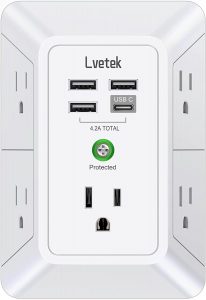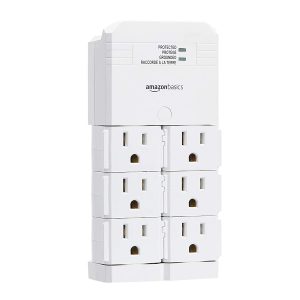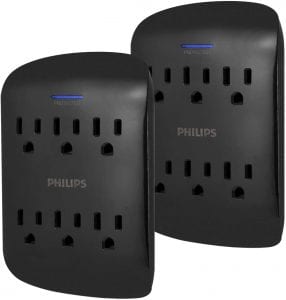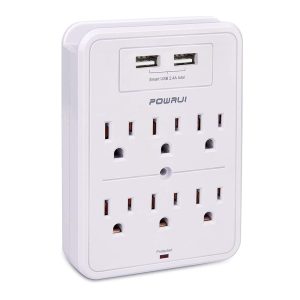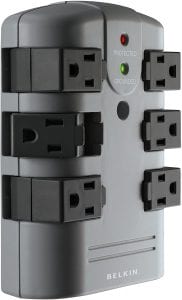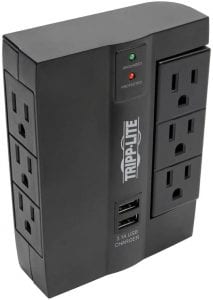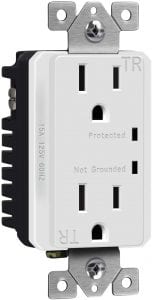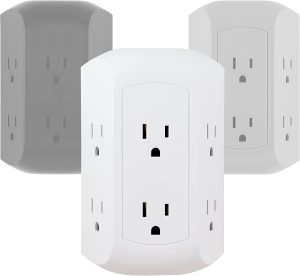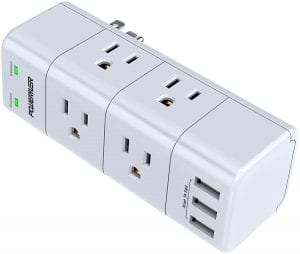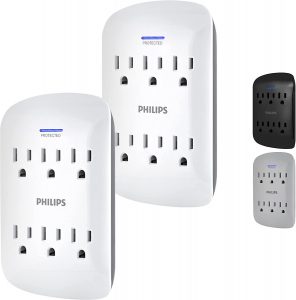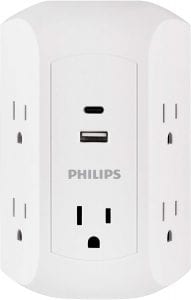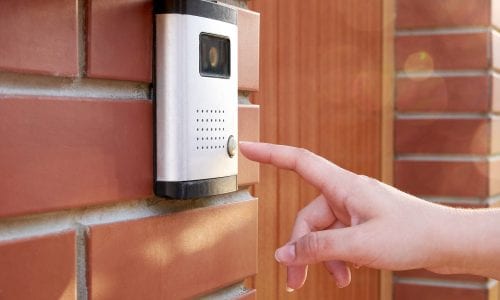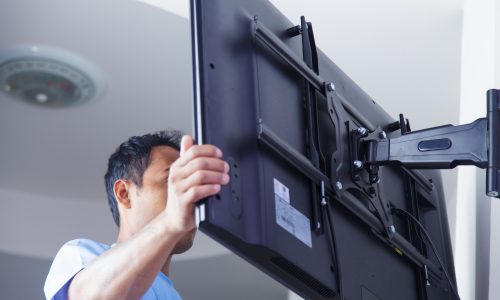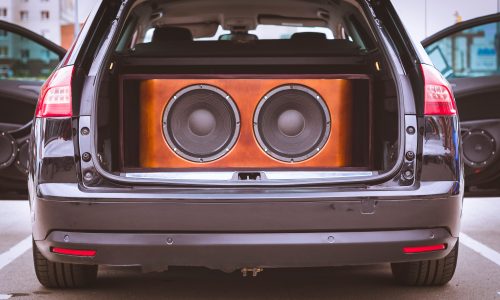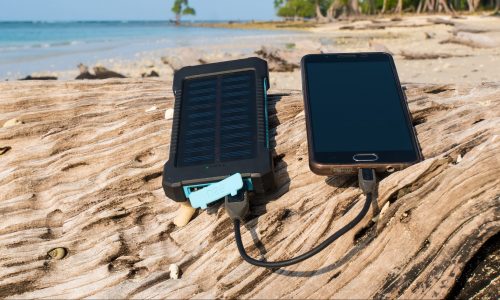The Best In-Wall Surge Protector
We looked at the top 12 In-Wall Surge Protectors and dug through the reviews from 10 of the most popular review sites including and more. The result is a ranking of the best In-Wall Surge Protectors.
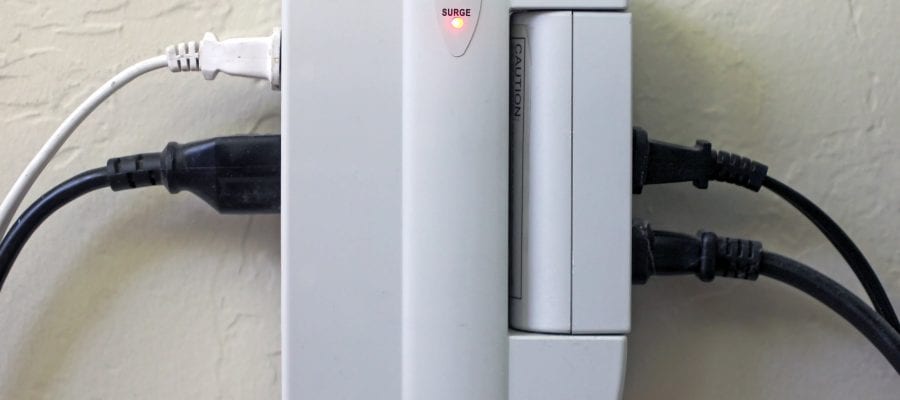
Our Review Process
Don't Waste Your Money is focused on helping you make the best purchasing decision. Our team of experts spends hundreds of hours analyzing, testing, and researching products so you don't have to. Learn more.
Our Picks For The Top In-Wall Surge Protectors
- 1. Lvetek Smart 9-In-1 In-Wall Surge Protector, 5-Outlet
- 2. Amazon Basics LED Indicators Space Saving In-Wall Surge Protector, 6-Outlet
- 3. PHILIPS 6-Outlet Surge Protector Tap, 2-Pack
- 4. POWRUI Rechargeable Professional In-Wall Surge Protector, 6-Outlet
- 5. Belkin Compact Space Saving In-Wall Surge Protector, 6-Outlet
- 6. Tripp Lite Personal Home In-Wall Surge Protector, 6-Outlet
- 7. Technology Research Surge Guard 50 Amp Entry Level Portable Surge Protector
- 8. TOPGREENER Easy Install In-Wall Surge Protector, 2-Outlet
- 9. GE Pro Lightweight Dorm Room In-Wall Surge Protector, 6-Outlet
- 10. POWERIVER ETL Certified In-Wall Mount Surge Protector, 6-Outlet
- 11. Philips Portable 6-Outlet In-Wall Surge Protector, 2-Pack
- 12. Philips 15W USB-C Surge Protector Adapter Wall Tap
Increase your productivity with this in-wall surge protector. It's three sided and offers a total of four USB ports and five AC outlets. That means you'll be able to power your main computer, printer, laptop, cellphone and tablet all at the same time.
Budget-Friendly PickThanks to the economical price tag on this in-wall surge protector, you'll be able to afford a second one.
With this in-wall surge protector, you can turn your two three-prong outlets into six. Each of the six outlets also rotate, allowing you to position them toward the item you're powering. The built-in LED indicator lights are also a plus, as they let you know the device is working properly.
Simple, Yet EffectiveThis in-wall surge protector comes in white and has a 1080-joule energy rating.
This surge protector is designed to save space by extending your outlet to allow for plugging in up to six devices. That also makes it a great choice if you're looking to create a charging station. There's even a protected indicator light at the top of the surge protector to let you know it's working properly.
Multiple Color OptionsYou can actually match this surge protector to your decor, as it comes in black, coral, gray, teal and white.
You'll get advanced surge protection with this wall outlet, which can cover you for up to 1680 Joules. It has a slim profile to expand your power outlets without consuming floor space. It's built using fire-resistant poly-carbon material for extra durability and protection.
USB and ACThis in-wall surge protector includes four USB charger ports and three AC outlet plugs to provide support for both your power and USB cables.
Buying Guide
Your electronic devices and appliances rely on a steady stream of electricity. Unfortunately, electricity can be unpredictable. Power fluctuations and storms can cause something called a “surge,” which can damage sensitive electronics. Since most households leave items plugged in even when they aren’t in use, this means many consumers are at risk of a loss.
There’s a way to protect against those surges, though. A surge protector is built specifically to absorb those spikes and over-voltages. The average home experiences hundreds of potentially dangerous surges in electricity every year. With a surge protector, you get protection against those spikes to prevent data loss or, worse, entire device loss.
But not all surge protectors are the same. You’ll notice as you’re looking for a surge protector that they’re rated in Joules. That rating refers to the level of energy the equipment can absorb before failing. The higher the rating, the better, but it’s best to stick with protectors that have a Joule rating of at least 600.
You’ll also have a wide range of choices when it comes to the build of your surge protector. Traditional strip-style protectors are designed to be set on the floor or a table, but those can get in the way. In recent years, manufacturers have upgraded to a style that keeps the power strip as snugly against the wall as possible.
Before you start shopping for a surge protector, though, take a close look at the area where you’ll be keeping it. Pay attention not only to the space you’ll have to store the protector, but how accessible it will be for your power cords. You may find that the angle won’t be ideal for your power cords with some surge protectors, in which case you’ll possibly need to consider one that has adjustable outlets, or outlets on the sides as well as the front.
Why we recommend these in-wall surge protectors?
Products Considered
Products Analyzed
Expert Reviews Included
User Opinions Analyzed
Our experts reviewed the top 12 In-Wall Surge Protectors and also dug through the reviews from 10 of the most popular review sites including and more. The result is a ranking of the best of the best In-Wall Surge Protectors.
DWYM is your trusted roduct review source. Our team reviews thousands of product reviews from the trusted top experts and combines them into one easy-to-understand score. Learn more.
The Best Bang For Your Buck
POWRUI Rechargeable Professional In-Wall Surge Protector, 6-Outlet
Key Takeawy
You'll get advanced surge protection with this wall outlet, which can cover you for up to 1680 Joules. It has a slim profile to expand your power outlets without consuming floor space. It's built using fire-resistant poly-carbon material for extra durability and protection.
What other experts liked
What to Look For
- The number of outlets, as well as the placement of them, are important considerations when you’re picking out a surge protector. Make sure you have enough to cover your current equipment plus anything you might add to your collection.
- Some surge protectors have USB outlets. This will come in handy for charging phones and mobile devices without having to track down your power brick.
- Bulky power cords can be tough to plug into tight outlets. Some surge protectors put plenty of space between each outlet to help with that.
- For surge protection, look for a strip rated at least 600 Joules. But you’ll find many rated above 1000.
- If you’ve had your power strip for a while, it’s likely time for an upgrade. Over time, power strips lose their protective features. Unfortunately, most strips won’t let you know when this happens. Surge protectors typically last three to five years.
- Some surge protectors have outlets that can be rotated by as much as 90 degrees. This will give you the flexibility you need if you’re squeezing it behind desks and other furniture.
- Surge protectors don’t just protect your equipment. They can also help reduce your risk of a fire. Some are even built using fire-resistant materials.
- As an extra protection, some surge protectors shut off power to the strip if the protection circuit is compromised.
- LED lights that alert you if an outlet is active can come in handy.
- Most surge protectors can be plugged into an outlet you already have. Some, however, will need to replace the outlet, which requires some basic installation work.
- Although they look similar to surge protectors, some power strips have no surge protection whatsoever. Look for a Joules rating on any power strip you’re buying.
- If you’re using the USB ports on your power strip for charging, you’ll want to make sure enough power gets through to your device. You’ll need at least 2 amps for quick-charging power.
More to Explore
Benjamin Franklin is often credited with discovering electricity, but the origins of electricity go back much further. Around 600 B.C., Ancient Greeks discovered static electricity when they rubbed fur on fossilized tree resin. In the 1900s, researchers found pots containing sheets of copper that are believed to have been used for lighting in Ancient Rome. With Ben Franklin’s experiment, we realized that lightning was the same as electric sparks, which is why he’s often credited with the initial discovery. But it was physicist Alessandro Volta’s voltaic pile, which was an early electric battery, that was the first creation of a steady flow of electrical charge.

